As Gardening for November sets in, gardens transition into a quieter phase, preparing for winter’s chill. This month offers essential tasks to ensure your plants thrive and your outdoor space remains inviting. Here’s a comprehensive guide to gardening in November, filled with practical tips and insights.
Raking Leaves and Clearing Debris
With the autumn leaves falling, it’s time to tackle the accumulation of leaves and debris in your garden. This cleanup is crucial for maintaining plant health and preparing your garden for winter.
The Importance of Leaf Cleanup
Regularly raking leaves not only keeps your garden looking tidy but also prevents mold, pests, and diseases that can thrive in decaying matter.
Tips for Effective Raking
- Use the Right Equipment: A sturdy rake is essential. For larger areas, consider using a leaf blower to save time.
- Composting Leaves: Instead of discarding leaves, compost them to create rich organic matter for your garden. Shredding the leaves first can accelerate the decomposition process.
- Watch for Pests: As you clean up, keep an eye out for hidden pests or diseases under the leaves, and dispose of any affected plant material.
Maintaining Garden Tools
As the gardening season comes to a close, it’s an opportune moment to perform maintenance on your tools. Proper care extends their lifespan and ensures they’re ready for the next season.
The Benefits of Tool Maintenance
Well-maintained tools not only last longer but also improve your efficiency when gardening.
Steps for Proper Tool Care
- Cleaning: Begin by removing dirt and debris from your tools. A mixture of vinegar and water can help eliminate rust.
- Oiling: Apply a light machine oil to blades, hinges, and handles to prevent rust and maintain functionality.
- Storage: Store tools in a dry, sheltered area to protect them from moisture and prolong their lifespan.
Tackling Weeds
Weed control is vital in November. Weeds can compete with your plants for nutrients and space, so addressing them now can save you time and effort in the spring.
Effective Weed Management Strategies
Taking action against weeds before they go dormant is crucial for maintaining a healthy garden.
Techniques for Weeding
- Hand Pulling: Remove weeds by hand, ensuring you get the entire root to prevent regrowth. This method is particularly effective for smaller infestations.
- Mulching: Applying a layer of mulch can suppress weed growth and protect your soil. Organic mulches like shredded leaves or straw are excellent choices.
- Using Landscape Fabric: For larger areas, consider laying down landscape fabric to hinder weed growth during the winter months.
Planting Fruit Trees
November can still be an excellent time for planting fruit trees, especially in milder climates. Fall planting allows roots to establish before winter sets in.
Advantages of Fall Planting
Planting in the fall can lead to stronger trees in spring, as they have more time to develop their root systems.
Guidelines for Planting Fruit Trees
- Select Appropriate Varieties: Choose fruit trees that are suited to your climate and soil conditions. Popular choices include apple, pear, and plum trees.
- Site Preparation: Ensure your planting site offers good drainage and adequate sunlight. Dig a hole that’s twice the width of the root ball for optimal growth.
- Water Thoroughly: After planting, water the tree well to help settle the soil and provide moisture for the roots.
Protecting Young Trees
As temperatures drop, it’s essential to protect young or tender tree trunks from frost and cold winds. This is especially important for newly planted trees.
How to Safeguard Tree Trunks
Covering trunks helps shield them from frost damage and sunscald, which can occur during sunny winter days.
Methods for Protecting Tree Trunks
- Use Tree Wraps: Consider wrapping the trunks with tree wraps or burlap to insulate them. Wrap from the base to just above the first set of branches.
- Avoid Over-tightening: Ensure the wrap is not too tight, allowing for air circulation and preventing moisture buildup that could lead to rot.
- Remove Wraps in Spring: Once frost danger has passed in spring, remove the wraps to allow the tree to breathe and grow naturally.
Lawn Maintenance in November
November is an ideal time to focus on lawn care, including mowing and maintenance tasks that prepare your grass for winter.
Benefits of Proper Lawn Care
Regular maintenance during the fall can lead to a healthier lawn come spring.
Key Lawn Care Tasks
- Mow at the Correct Height: Adjust your mower to a higher setting during the fall. Keeping grass slightly longer helps protect the roots from frost damage.
- Clear Grass Clippings: If grass clippings are too thick, remove them to prevent suffocation of the grass below.
- Aerate if Necessary: If your lawn is compacted, consider aerating it to improve air and water circulation in the soil.
Watering Plants Before Frost
As the first frost approaches, it’s crucial to ensure your plants receive adequate moisture. Proper watering helps them endure winter dormancy.
Importance of Pre-Frost Watering
Watering before the ground freezes allows plants to absorb moisture that will sustain them during the colder months.
Watering Techniques
- Deep Watering: Focus on deep watering to ensure moisture reaches the root zone. A soaker hose or drip irrigation system can be effective for this purpose.
- Check Soil Moisture: Before watering, test the soil moisture by inserting your finger into the ground. If the top few inches feel dry, it’s time to water.
- Optimal Timing: Water in the morning when temperatures are cooler to minimize evaporation and give plants time to absorb moisture.
Adding Winter Mulch
With temperatures dropping, adding mulch is vital for protecting your garden beds. Mulch acts as insulation, regulating soil temperature and retaining moisture.
Benefits of Winter Mulching
Winter mulch protects plant roots from freezing and helps maintain soil health.
Effective Mulching Tips
- Select Appropriate Materials: Organic mulches like shredded leaves, straw, or wood chips work best. Avoid fresh grass clippings, which can mat down.
- Apply a Thick Layer: Aim for a depth of 2 to 4 inches to effectively insulate the soil and suppress weeds.
- Timing for Application: Wait until the ground has cooled to prevent trapping heat, which could encourage premature growth in plants.
Feeding the Birds
November is a fantastic time to support local wildlife by feeding birds. As natural food sources dwindle, providing nourishment helps them survive the winter months.
The Benefits of Bird Feeding
Feeding birds not only aids their survival but also enhances your garden’s ecosystem and adds liveliness to your outdoor space.
Tips for Attracting Birds
- Choose the Right Feeders: Use various feeders to attract different species. Tube feeders work well for small birds, while platform feeders cater to larger ones.
- Select Quality Birdseed: Offer a mix of seeds, such as sunflower, millet, and nyjer seeds, to appeal to a diverse range of birds.
- Keep Feeders Clean: Regularly clean feeders to prevent mold and disease, ensuring a safe feeding environment for birds.
Adding Organic Compost
November is an excellent time to enrich your garden beds with organic compost. Compost provides essential nutrients and improves soil structure.
The Advantages of Composting
Adding compost enhances soil health, promotes beneficial microorganisms, and improves moisture retention.
Tips for Composting
- Start Your Own Compost Pile: If you don’t already have one, consider starting a compost pile using kitchen scraps, yard waste, and other organic materials.
- Top-Dress with Compost: Spread a layer of compost over your garden beds to replenish nutrients. This will break down over the winter and enrich the soil for spring planting.
- Avoid Overapplication: Apply compost in moderation to prevent nutrient burn and ensure even distribution throughout your garden.
Planting Bulbs for Spring Blooms
As November progresses, consider planting bulbs for a beautiful spring display. Tulips, daffodils, and hyacinths are excellent choices that thrive when planted in fall.
The Joy of Spring-Blooming Bulbs
Planting bulbs in November allows them to establish roots before winter, leading to vibrant blooms in spring.
Guidelines for Planting Bulbs
- Follow Planting Depth Recommendations: Generally, plant bulbs at a depth of two to three times their height, ensuring the pointed end faces up.
- Choose Quality Bulbs: Select firm, healthy bulbs from reputable sources for the best chance of successful growth.
- Water After Planting: Water thoroughly after planting to help settle the soil and provide moisture to the bulbs.
Forcing Bulbs Indoors
If you want a touch of spring indoors during winter, consider forcing bulbs like amaryllis and paperwhite narcissus. This technique allows you to enjoy vibrant blooms while snow covers the ground outside.
Benefits of Forcing Bulbs
Forcing bulbs provides a quick burst of color and beauty in your home during the dreary winter months.
Steps for Forcing Bulbs
- Select Suitable Bulbs: Choose bulbs specifically bred for forcing, such as amaryllis and paperwhites.
- Use Proper Containers: Plant bulbs in containers with good drainage. Fill with well-draining potting mix, and plant according to package instructions.
- Provide Optimal Conditions: Place pots in a cool, dark location for a few weeks until shoots appear, then move them to a bright spot to encourage blooming.
Preparing Your Garden for Winter
As November progresses, take the time to prepare your garden for winter. This includes a range of tasks that will ensure a healthy start come spring.
Mulching for Insulation
Adding mulch as winter approaches protects plant roots from freezing temperatures and maintains soil health.
Selecting the Right Mulch
- Organic Options: Use materials such as straw, shredded leaves, or pine needles, which decompose over time, enriching the soil.
- Depth Matters: Aim for a 2- to 4-inch layer to provide effective insulation and prevent weeds from sprouting.
Protecting Tender Plants
If you have tender plants that won’t survive the winter, consider bringing them indoors or providing additional protection.
Methods for Protecting Tender Plants
- Transplanting Indoors: For potted plants, bring them inside before the first frost. Ensure they have adequate light and warmth.
- Covering Plants: Use row covers, blankets, or burlap to protect vulnerable plants left outside. This helps insulate them from cold winds and frost.
Reflecting on the Gardening Season
November is also a time to reflect on your gardening successes and challenges from the past year. Take notes on what worked well and what could be improved.
Benefits of Reflection
Reflecting on your gardening experiences helps you plan for a more productive season next year.
Keeping a Garden Journal
- Record Observations: Note which plants thrived, which struggled, and any pest issues you encountered. This will guide your choices for next year.
- Plan for Next Year: Use your journal to sketch out plans for new plantings, changes to your garden layout, or new gardening techniques to try.
Conclusion
November is a month filled with preparation, reflection, and essential tasks in the garden. By focusing on activities such as cleaning up leaves, maintaining tools, and protecting plants, you can ensure your garden remains healthy and vibrant through the winter months. Embrace the opportunities this month offers, and enjoy the beauty and bounty of your garden as you prepare for the colder seasons ahead!



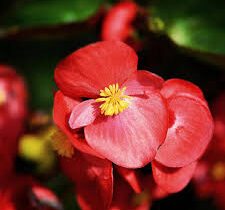
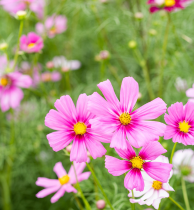
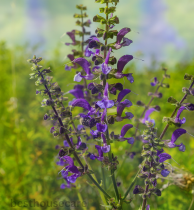
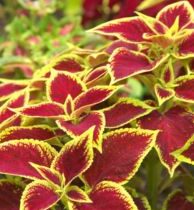
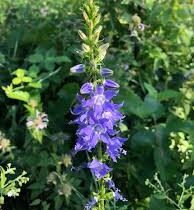
Leave a Reply
View Comments